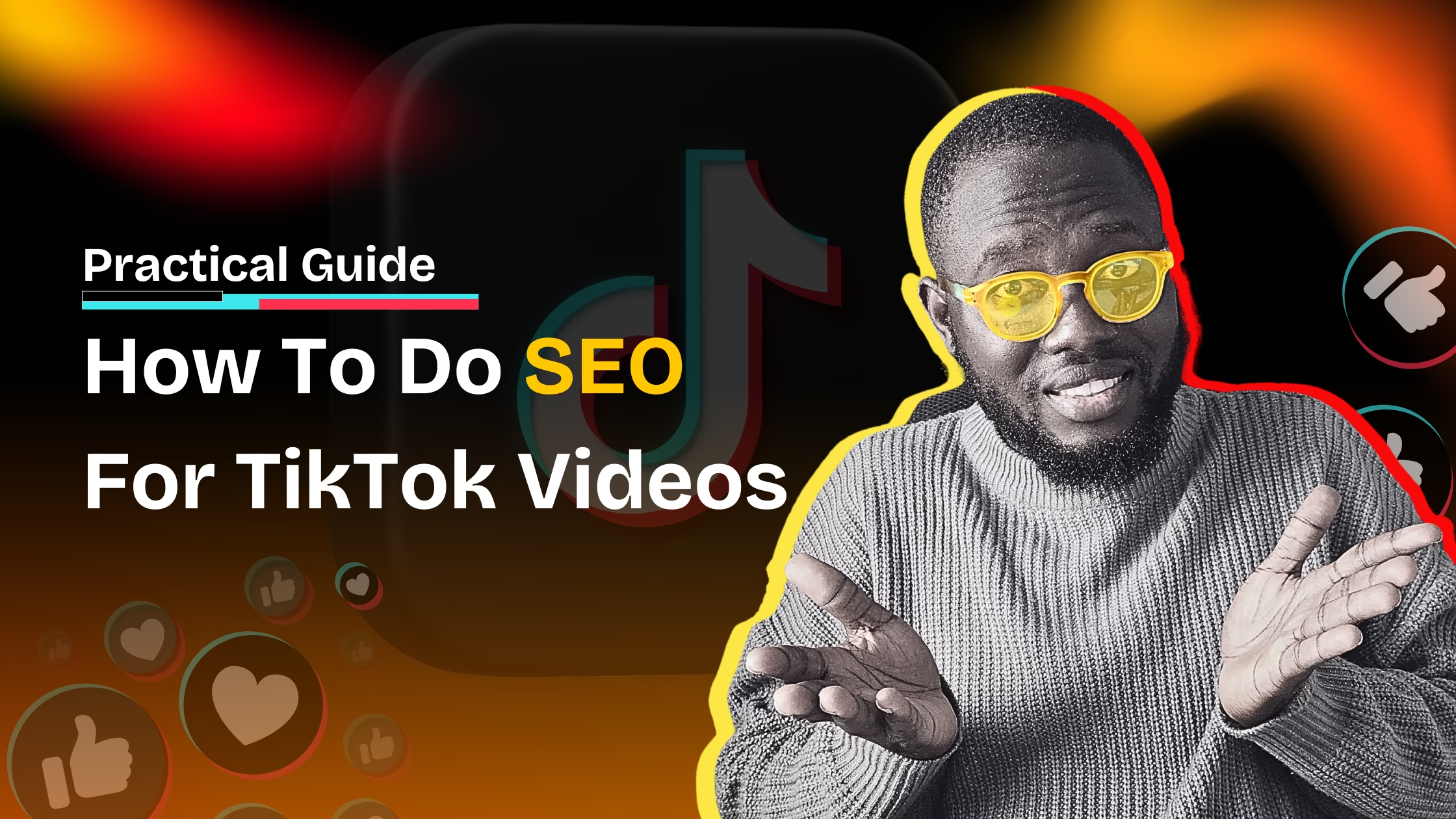Introduction
If you’re interested in marketing with social media, you’re in the right place!
Social media marketing involves using platforms like Facebook, Instagram, TikTok, and YouTube to increase brand awareness, drive website traffic, generate leads, boost sales, and provide excellent customer care. These platforms allow you to engage with existing customers and reach new audiences.
Most social media platforms also offer built-in analytics tools. These tools help you track the success of your marketing efforts by providing insights into metrics such as reach, clicks, engagement, organic and paid likes, follower growth, and conversion rates. By analyzing this data, you can identify more effective strategies for marketing with social media.
Now that we’ve identified what marketing with social media is, let’s walk through how to get started.
Picking a Social Media Platform For Marketing
When it comes to picking a social media platform for marketing, it’s important to consider several factors to ensure you’re making the most effective choice for your brand.
Here’s a guide to help you navigate this decision:
Step 1: Know Your Audience:
The first step is to understand where your target audience spends their time.
Different demographics gravitate towards different platforms.
For example, Instagram and TikTok tend to attract younger users, while Facebook and LinkedIn cater to a broader age range and are particularly popular among professionals.
Step 2: Designate Your Business Model/Type:
Social media platforms often align with specific business models, so it’s important to choose the right one.
For B2B (Business-to-Business) such as web design agencies, LinkedIn is ideal due to its professional networking focus.
For B2C (Business-to-Consumer) like Nike & Adidas, Facebook and Instagram are great for consumer engagement and shopping.
For D2C (Direct-to-Consumer) businesses, Instagram and TikTok are best, offering visual and interactive ways to connect directly with customers, showcase products, and leverage influencer partnerships.
Step 3: Consider Your Content Format:
The type of content you plan to share is important for deciding what platform you use.
Platforms like Instagram and Pinterest are image-focused, making them perfect for brands with visually appealing products- like e-commerce brands, photography brands, modelling etc.
YouTube and TikTok are best for video content, such as tutorials, reviews, or entertainment- which are common for agencies and SaaS-based businesses.
Twitter and LinkedIn are great for text-based content, news, and professional insights.
Other Contributors To Your Choice Of Social Media Platform For Marketing
Your Business Goals:
This answers what you hope to achieve with your social media marketing.
If you’re looking to drive brand awareness, visually appealing platforms like Instagram and YouTube might be ideal.
For lead generation and B2B marketing, LinkedIn is a strong contender. Facebook can be versatile, offering a mix of advertising options and community engagement.
Platform Features:
Each platform offers unique features that can help grow your marketing strategy.
For example, Instagram Stories, LinkedIn articles, Facebook Groups, and TikTok challenges are a few unique examples.
Consider which features align with your content strategy and how they can help you engage with your defined audience.
Your Resources:
Managing multiple platforms requires time and resources.
It’s important to consider your team’s capacity and expertise when deciding how many platforms to focus on.
It’s often advisable to start with and excel on a few platforms than to stretch yourself thin across many very early on.
Competitor Presence
You can also look at where your competitors are active and how they engage with their audience.
This can provide valuable insights into what’s working in your industry and help you identify potential gaps or opportunities for marketing on social media.
By carefully considering these factors above, you can select the platforms that best align with your brand and marketing objectives.
How To Learn Social Media Marketing: Understanding The Algorithms
Understanding the underlying principles of social media platforms is crucial for effective marketing.
Two fundamental frameworks that shape social media algorithms are interests and location.
Here’s how these principles are applied across various platforms:
Platform 1- Linkedin:
SOme Scenarios Where The LinkedIn Algorithm Utilizes User Interests
1. In Content Personalization: LinkedIn’s algorithm prioritizes content based on a user’s professional interests, which are determined by their profile information, interactions, connections, and the industry they are involved in.
For example, users who engage with content related to digital marketing will see more posts on that topic.
2. Groups and Hashtags: When you join groups and follow hashtags on LinkedIn that are relevant to your professional interests, the platform tailors content suggestions and connections based on those interests.
3. Job Recommendations: The platform suggests job opportunities based on a user’s profile, experience, and expressed interests, making it easier for them to find relevant opportunities.
Some Scenarios Where The LinkedIn Algorithm Utilizes User Location
1. Local Networking: LinkedIn promotes local networking by suggesting connections to you based on geographic proximity, such as people who work in the same city or region or went to the same school with you.
2. Localized Content: Users on Linkedin also often see posts and news related to their location, which helps them stay updated on local professional events and trends.
3. Location-Specific Job Postings: The platform also recommends job postings based on your current location or locations that you have specified interest in, helping you when doing local job searches.
Platform 2- Instagram
Scenarios Where The Instagram Algorithm Utilizes User Interests
1. On The Explore Page: Instagram curates content for the Explore page based on yourinteractions, such as liked posts, followed accounts, and engaged content.
This helps users discover new accounts and content aligned with their interests.
2. Algorithmic Feed: The main feed or reel feed is also tailored to show posts from accounts you interact with the most;
which means content is suggested to you based on the type of post you engage with, like or show INTEREST in.
3. Hashtags and Follow Suggestions: Users can follow hashtags and receive content suggestions based on their activity and interests, expanding their content exposure.
Scenarios Where The Instagram Algorithm Utilizes Location:
1. Location Tags: Users can tag their posts with location tags, which helps the Instagram platform categorize and display content to users in or interested in those areas.
2. Localized Content in Explore: The Explore page and Stories may also feature content from nearby locations, especially if the user frequently engages with location-specific content
Where To Learn Social Media Marketing (And Get Free Certifications)
To get started learning social media there are a few resources that are paid, however, if you’re seeking free resources, two platforms I’ve used personally for a long time are Hubspot Academy and Semrush Academy..
Semrush Academy
Semrush Academy provides a free social media marketing certification and crash courses that teach you skills that are essential to attract customers, build loyalty, and fuel growth on social media.
Hubspot Academy
You can learn how to build a successful social media strategy with Hubspot Academy‘s free Social Media Marketing Certification Course!
You’ll also discover how to create engaging content, expand your reach, measure ROI and how you can use social media to up your business’s brand awareness and attract new customers!
Conclusion
In conclusion, marketing with social media offers a powerful way to connect with your audience, increase brand visibility, and drive business growth. By carefully selecting the right platforms, understanding your target audience, and utilizing the unique features of each platform, you can create an effective social media strategy.
Remember to stay current with trends and algorithms, and consider expanding your skill set to include complementary areas like graphic design and video editing. With the right approach, social media marketing can be a key component of your overall marketing strategy, helping you achieve your business goals.






